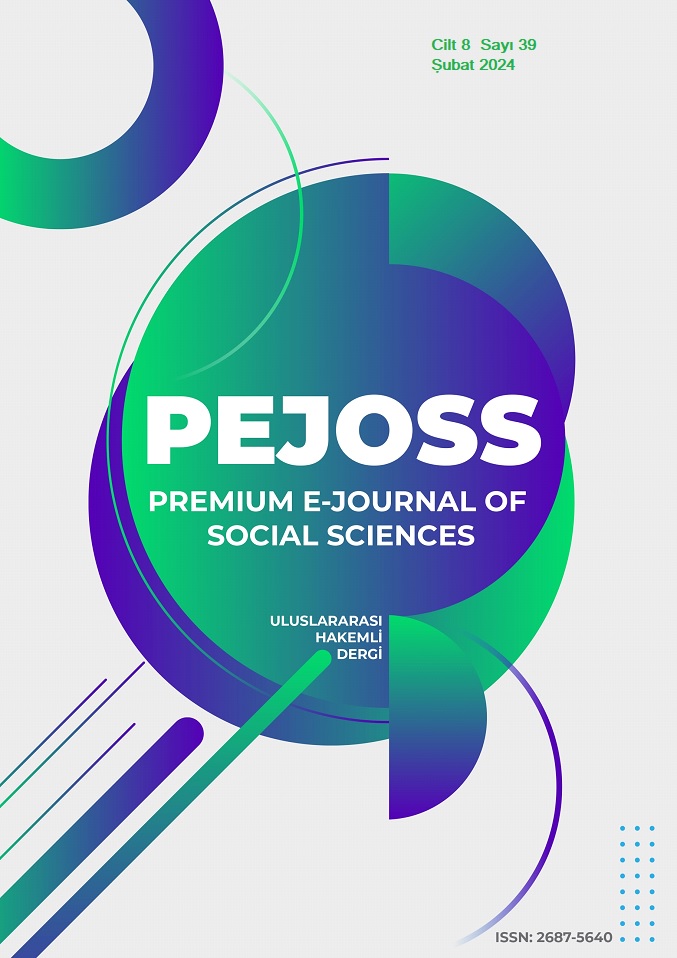A Look At The Land System In The Ottoman Empire
DOI:
https://doi.org/10.5281/zenodo.10775563Keywords:
Land in the Ottoman Empire, Ottoman Economy, Dirlik System, Iqta SystemAbstract
The Ottoman Empire was established as an agricultural country with the political, socio-economic and socio-cultural development of the Ottoman Principality, which was one of the principalities formed after the collapse of the Anatolian Seljuk State and reached the empire level by gradually developing its basic dynamics.
The Ottoman Empire, which started life as an Islamic state, was based on the understanding of ownership and land system by its founders from the relevant parts of Islamic law in economic terms and continued to implement the iqta system developed by Nizam al-Mulk, the famous vizier of the Seljuk State, in compliance with Islamic principles. However, with the inclusion of the newly acquired lands within the borders of the state through continuous conquests, the Ottoman Empire created its own "Dirlik System" by subjecting the lands to a new classification in the historical process with the fatwas given by the authorities within the framework of Islamic law. In this regard, for example, in the XVI. From the middle of the 19th century onwards, land practices in the Ottoman Empire were collected under three main headings Toprak-i öşriyye, Ayrın-i haraciyye and Toprak-i memleket or Araz-ı mîrî, continued until the Land Code dated 1858 came into force. Since the regulation of the Land Code dated 1858, lands have been Miri was applied to the end of the state, including property, foundation, abandoned and mevat.
Since the subject is quite comprehensive, this study will try to give a brief overview of the importance of soil in general, the land system applied from the early periods of Islam until the Ottomans and the land system applied in the Ottoman Empire until the Pre-Tanzimat period.
Downloads
References
Âşık Paşazade (1332). Tevârîh-i Âl-i Osman Âşık Paşazade Tarihi, Maarif-i Umumiye Nezareti Yayınları.
Bilmen, Ömer Nasuhi (1985), Hukuk-u İslamiyye ve Istılahat-ı Fıkhıyye Kamusu I, Bilmen Basımevi.
Cin, H. (1991). Arazi, TDV İslâm Ansiklopedisi, 3, 342-346.
Gökbilgin, M. T. (1977). Osmanlı Müesseseleri, Teşkilatı ve Medeniyeti Tarihine Genel Bakış, İstanbul Üniversitesi Edebiyat Fakültesi Yayınları.
İmam Ebu Yusuf (1973). Kitabü’l-Haraç, (Tercüme: Ali Özek), Hisar Yayınları.
İnalcık, H. (1952). 1431 Tarihli Timar Defterine Göre Fatih Devrinden Önce Timar Sistemi, IV. Türk Tarih Kongresi Ankara 10-14 Kasım 1948, Türk Tarih Kurum Yayınları.
İnalcık, H. (1958). Osmanlı Padişahı, A.Ü. SBF Dergisi, XIII ( 4), 68-79.
Karaduman, G. (2005). Sancak (Liva) Kanunnameleri, Türkiye Araştırmaları Literatür Dergisi (6), 527-538.
Saygılı, T. (2015). Babil Hukuku ve Hamurabi Kanunları, Sosyal Araştırmalar ve Davranış Bilimleri Dergisi, 2 (2), 1-22.
Sıddiki, M.N. (1984). İslam Ekonomi Düşüncesi, (Çev. Yaşar Kaplan), Bir Yayınları.
Şahin, İ.(2009). Sancak, TDV İslâm Ansiklopedisi, 36, 97-99.
Taşkent, S. (1993). İnsan Haklarının Uluslararası Dayanakları, Basısen Eğitim ve Kültür Yayınları.
Turan, O. (2009). Selçuklular Tarihi ve Türk-İslâm Medeniyeti, Ötüken Yayınları.
Umur, Z. (1965). Roma Hukuku Tarihine Giriş, Fakülteler Matbaası.
Uzunçarşılı, İ. H. (1988). Osmanlı Tarihi I, Türk Tarih Kurum Yayınları.
Ünal, M. A. (2013). Osmanlı Sosyal ve Ekonomik Tarihi, Paradigma Yayıncılık.
Yeniçeri, C. (1980). İslam İktisadının Esasları, Şamil Yayınları.
Yınanç, M. H. (1977). Ertuğrul Gazi, İslam Ansiklopedisi, c. IV, s. 328-337
Downloads
Published
How to Cite
Issue
Section
License
Copyright (c) 2024 Premium e-Journal of Social Science (PEJOSS)

This work is licensed under a Creative Commons Attribution 4.0 International License.


